Itinerary edited by the UNIVERSITY OF CAGLIARI 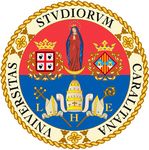

The precious biodiversity of Sardinia’s highly diverse natural environment is represented by the rich ornithology collection hosted and exhibited in the Department of Animal Biology and Ecology of the University of Cagliari. The oldest part of this important collection was probably part of the “Gabinetto di Storia Naturale” that the Viceroy of Sardinia Carlo Felice donated to the Royal University of Cagliari in 1806. The collection was assembled between the second half of the 19th century and the first few decades of the 20th century, but some additions were made in the 1970s.
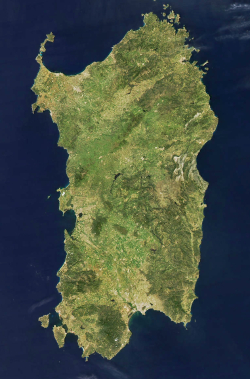
 Sardinia and its territory
Sardinia and its territorySardinia is located in the western Mediterranean Sea. Its total area is almost 25,000 square kilometres and it is therefore the second-largest island in the Mediterranean. The island’s geological formation is the result of long and complex geological and climate processes that created an extremely rich and varied environment and almost make Sardinia a separate small continent. It includes areas that are dramatically different in terms of natural environment and ecological function, e.g. woods, flatlands, and rocky vistas. Mountain systems distinguish the island’s dense and complex hydrographical network connected to its coastline, which creates some wetlands that are particularly important. The Sardinian coastline is also varied and complex, including smaller islands that are also environmentally significant (e.g. San Pietro, Asinara, Maddalena, Tavolara, etc.). Some very small islands can simply be seen as large rocks that equally feature interesting flora and fauna. Sardinia’s underwater areas also reveal an extremely varied and diverse natural environment.
Such a large and complex environmental variety of Sardinian flora and fauna makes this island one of the most appealing destinations for Italian as well as international naturalists (e.g. British and German).
 The origins of Sardinian fauna
The origins of Sardinian faunaSardinia’s present-day fauna is the result of geological, climatic and evolutionary changes that took place over millions of years. However, it is also due to man’s introduction of different species in prehistoric times (e.g. the Corsican red deer Cervus elaphus corsicanus and the Mouflon Ovis musimon) and in later historical periods (e.g. the Common rabbit Oryctolagus cuniculus, and the Barbary partridge Alectoris barbara, which was likely introduced by the Phoenicians or Romans, as well as several marine species). More recently, some amphibious and reptile species, along with birds, mammals and various invertebrates, have been introduced.
As for the vertebrates, it has been estimated that since 1900 approximately 240 species and subspecies have been become part of this environment; 9 amphibian and 20 reptile species (to which two endemic subspecies of the Tyrrhenian Wall Lizard Podarcis tiliguerta, respectively from the Isola del Toro [P. t. toro] and the Isola di Molarotto [P. t. ranzii]), should be added). In addition, there are 167 bird species (several of which are now extinct in Sardinia, such as the White-headed duck Oxyura leucocephala, White-tailed eagle Haliaeetus albicilla, Lammergeier vulture Gypaetus barbatus, Black vulture Aegypius monachus and the Osprey Pandion haliaetus.
 Sardinian Avian Fauna
Sardinian Avian FaunaThe importance of the Sardinian avian fauna is demonstrated by the fact that the island is host to a nesting population that is rare and localised. Approximately 20,000 couples of Greater flamingos Phoenicopterus roseus were counted in 2015 in the Molentargius Park (which amounts to 90% of the entire Italian population); 2,000 nesting couples of Slender-Billed Gulls Chroicocephalus genei in the same park; more than 600 Purple swamphens (approximately 10% of the world population of the species Porphyrio porphyrio porphyrio ). The coastline and small islands off Sardinia house some of the most important marine birds in the Mediterranean Sea, such as the European shag Phalacrocorax aristotelis desmarestii, Yelkouan shearwater Puffinus yelkouan, Scopoli’s shearwater Calonectris diomedea, European storm petrel Hydrobates pelagicus and the Audouin’s gull Larus audouinii. A partially indigenous population of Griffon vultures Gyps fulvus can be found in northwest Sardinia. They are the only birds of this species still nesting in Italy.
 THE INLAND AREAS
THE INLAND AREAS
Flatlands in the middle Tirso Valley – A large and complex flatland system can be found between the Tirso valley and the Marghine mountain chain. This system covers over 20,000 hectares that approximately stretch from Ottana and Bolotana and from Birori and Borore. Along with the countryside of Ozieri, it can be considered as the most important area of Sardinia in terms of avian fauna. The most important ornithological species is certainly the Little bustard Tetrax tetrax, whose population amounts to one third of the whole Sardinian (and national) population. In addition, some very rare species at the regional level can be found, e.g. the Lesser kestrel Falco naumanni, Great spotted cuckoo Clamator glandarius, European roller Coracias garrulus and other equally important species from a protected fauna point of view, such as the Eurasian stone curlew Burhinus oedicnemus or the Calandra lark Melanocorypha calandra.
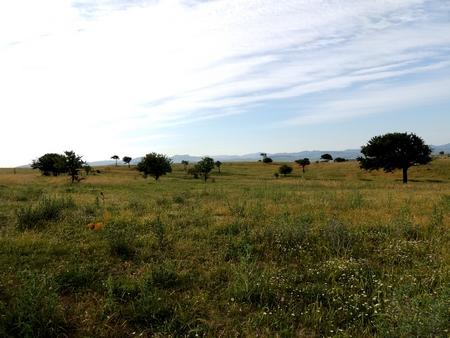
Central Campidano – Campidano is the largest alluvial plain of Sardinia and has preserved its mostly natural areas, despite the intense agricultural exploitation of its fertile land. It includes the breathtaking areas at the foot of the mountain range of the Iglesiente (see pic. X), which are also the most interesting in terms of avian fauna. The wooded pastures and arable areas feature protected species such as the Eurasian stone curlew Burhinus oedicnemus and Greater short-toed lark Calandrella brachydactyla, as well as residual nuclei of Little bustard Tetrax tetrax in the south.
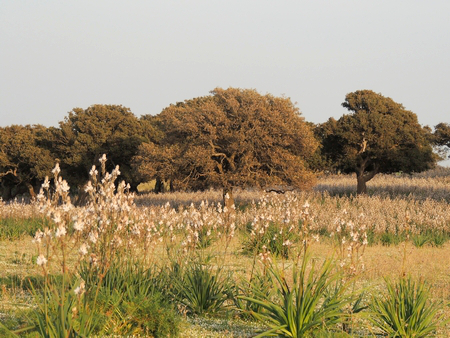
The Gennargentu Massif – The Gennargentu Massif is the highest mountain range of Sardinia and features the island’s highest peaks (approx. 1,800 m above sea level). It also displays a complex geology and landscape with a varied and particularly rich and interesting avian fauna. There are several species living on wooded areas, pastures and mountainous scrublands. Some of these species are extremely important from the preservation and zoogeographical point of view, such as the Tawny pipit Anthus campestris, Marmora's warbler Sylvia sarda and the Corsican finch Carduelis corsicana. Several birds of prey, which in the past included all three species of European vultures (Black vulture, Lammergeier vulture and Griffon vulture) and the Bonelli’s eagle, all of which are now extinct, nevertheless still comprise other species such as the Golden eagle Aquila chrysaetos and the Sardinian goshawk Accipiter gentilis arrigonii.
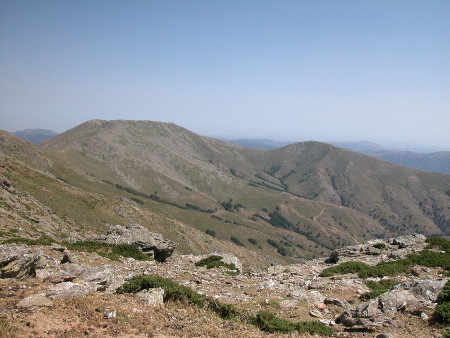
The local ecosystems and extensive agriculture are significant as well. This is mainly due to the fact the they house extremely important species in terms of protected fauna, such as the Little bustard Tetrax tetrax which is the only population still remaining in Italy, Eurasian stone curlew Burhinus oedicnemus, European roller Coracias garrulus, Calandra lark Melanocorypha calandra, Greater short-toed lark Calandrella brachydactyla and many other species that risk extinction across Europe.
Discover the variety of the Sardinian environment… Some examples:
 THE COASTAL WETLANDS
THE COASTAL WETLANDS
A coastline defines the border between the marine environment and the land, and it features a wide variety of environmental biodiversity. In such areas, Sardinian avian fauna is particularly abundant in both the coastal wetlands and the rocky and micro-island environments off the coast.
Sardinia has a large number of coastal wetlands that are extremely varied in terms of size and type. Altogether they are an essential resource for thousands of water birds, which use them as their stopover during the year for nesting and wintering. Large-size wetlands are mainly concentrated in the western and southern parts of the island (i.e. Oristano, Sulcis and Cagliari). Conversely, numerous smaller wetlands can mainly be found on the eastern coast.
Molentargius is a saline pond surrounded by the urban areas of Cagliari, Quartu Sant’Elena, Selargius and Quartucciu. It is one of the most important wetlands in Sardinia; according to the Ramsar Convention, Molentargius is classified as a site of international interest as it is an ideal habitat for water birds; it is also part of the natural regional park and therefore a protected area. Its avian fauna represents the area’s most significant natural feature; its rich variety of avian fauna reflects the Molentargius’s extremely favourable position in the middle of the Mediterranean Sea, along the route of many migratory birds that annually fly from Europe to Africa and vice versa. Moreover, it includes a large variety of fresh- and salt-water environments that make this pond, and the lagoon near Cagliari, one of the most interesting wetlands at the national and European level. Molentargius is an ideal place for nesting, stopover and wintering for many bird species; many of which winter and nest there in large numbers, e.g. Greater flamingos Phoenicopterus roseus, Purple swamphens Porphyrio porphyrio porphyrio and the Slender-billed gulls Chroicocephalus genei. Among the many wintering species, we can also find species of anatidae and shorebirds.
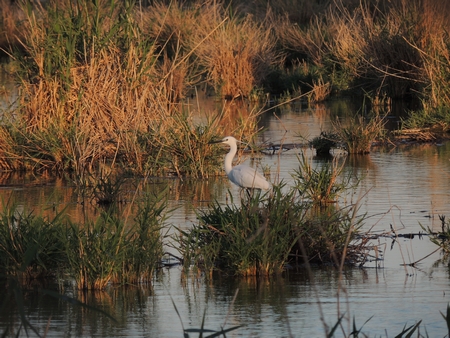
Wetlands in Capo Comino – Some small-sized wetlands can be found (s’Ena ‘e Sa Chitta, Stagni di Berchida, Bidderosa and Sa Curcurica) along Sardinia’s northeast coastline, between Siniscola and Orosei. The uniqueness of their natural and landscape is also particularly interesting in terms of avian fauna. These wetlands include species of shorebirds (e.g. the Kentish plover Charadrius alexandrinus, Little ringed plover Charadrius dubius, Black-winged stilt Himantopus himantopus), herons (e.g. Little egret Egretta garzetta, Cattle egret Bubulcus ibis and Purple heron Ardea purpurea), anatidae (e.g. Mallard Anas platyrhynchos ) and rails (Purple swamphen Porphyrio porphyrio, Common moorhen Gallinula chloropus and Eurasian coot Fulica atra ).
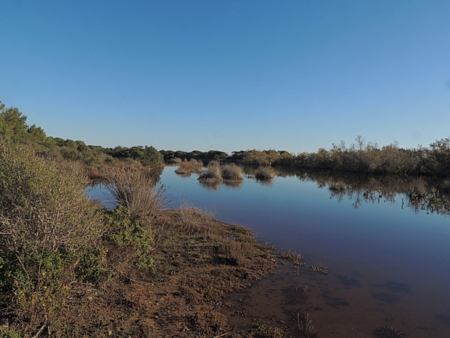
 ROCKY ISLANDS
ROCKY ISLANDS
Rocky coastlines and micro-island environments – Sardinia is in the middle of the western Mediterranean Sea and this make it an extremely important place for water bird populations. The complex development of its rocky coastline and the many small-sized islands off the coast – in the picture from left to right: the coastline of the Isola di San Pietro and Isola della Vacca, which are both southwest of Sardinia – provide an ideal habitat for the nesting of Procellariiformes, Phalacrocoracidae and shorebirds. The most important species in terms of protected fauna are the European storm petrel Hydrobates pelagicus, Scopoli’s shearwater Calonectris diomedea, Yelkouan shearwater Puffinus yelkouan, European shag Phalacrocorax aristotelis desmarestii and Audouin’s gull Larus audouinii. Two species of birds of prey can also be found: Peregrine falcon Falco peregrinus and, more importantly, Eleonora’s falcon Falco eleonorae, which is a migratory species that winters in Madagascar and nests in a few colonies in southwest Sardinia and the Gulf of Orosei.
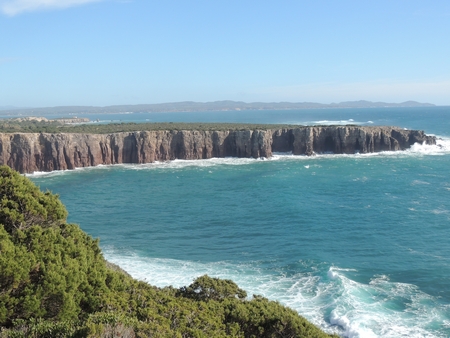
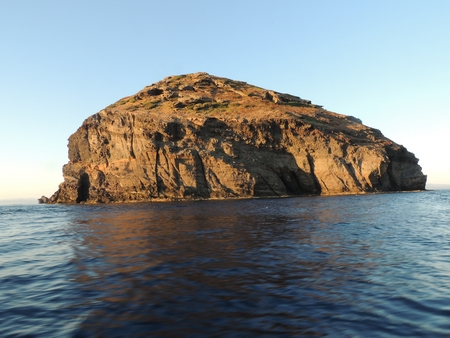
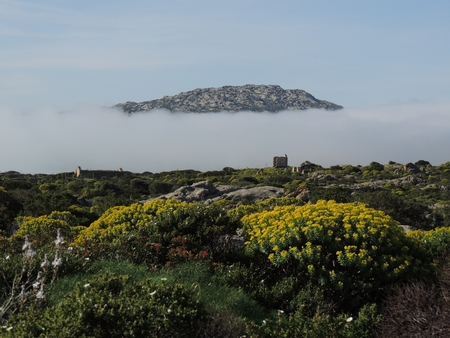
Asinara (an island off northwest Sardinia) – In 1997, Asinara (52 Km2) was declared a national park; it is long and flat (with a perimeter of nearly 100 km) and it mainly features rocky vistas and a rough terrain. It is consequently covered with scrub vegetation, but the fact that the island used to host a high-security prison also contributed to the present landscape. This island is an ideal place for several nesting protected species, among which the Peregrine falcon Falco peregrinus, Barbary partridge Alectoris barbara, Eurasian stone curlew Burhinus oedicnemus, Audouin’s gull Larus audouinii, European shag Phalacrocorax aristotelis desmarestii and it is an essential stopover during the migration of many trans-Saharan species.